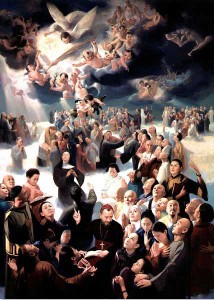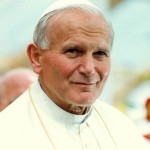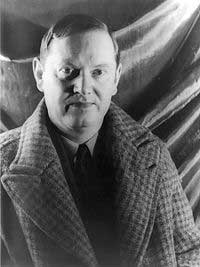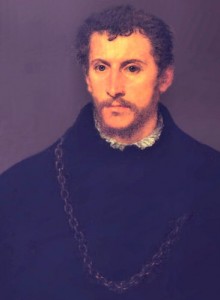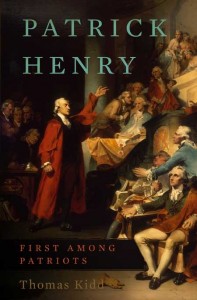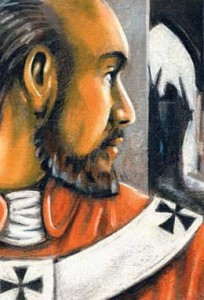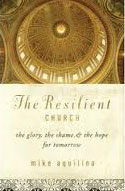[powerpress]
This entry was posted on Sunday, July 15th, 2012 at 8:28 pm
You can follow any responses to this entry through the RSS 2.0 feed.
Sunday 1 October 2000 (excerpt taken from vatican.va)
2. “The precepts of the Lord give joy to the heart” (Responsorial Psalm). These words of the Responsorial Psalm clearly reflect the experience of Augustine Zhao Rong and his 119 companions, martyrs in China. The testimonies which have come down to us allow us to glimpse in them a state of mind marked by deep serenity and joy.
Today the Church is grateful to her Lord, who blesses her and bathes her in light with the radiant holiness of these sons and daughters of China. Is not the Holy Year the most appropriate moment to make their heroic witness shine resplendently? Young Ann Wang, a 14-year-old, withstood the threats of the torturers who invited her to apostatize. Ready for her beheading, she declared with a radiant face: “The door of heaven is open to all”, three times murmuring: “Jesus”. And 18-year-old Chi Zhuzi, cried out fearlessly to those who had just cut off his right arm and were preparing to flay him alive: “Every piece of my flesh, every drop of my blood will tell you that I am Christian”.
The other 85 Chinese men and women of every age and state, priests, religious and lay people, showed the same conviction and joy, sealing their unfailing fidelity to Christ and the Church with the gift of their lives. This occurred over the course of several centuries and in a complex and difficult era of China’s history. Today’s celebration is not the appropriate time to pass judgement on those historical periods: this can and should be done elsewhere. Today, with this solemn proclamation of holiness, the Church intends merely to recognize that those martyrs are an example of courage and consistency to us all, and that they honour the noble Chinese people.
Resplendent in this host of martyrs are also the 33 missionaries who left their land and sought to immerse themselves in the Chinese world, lovingly assimilating its features in the desire to proclaim Christ and to serve those people. Their tombs are there as if to signify their definitive belonging to China, which they deeply loved, although with their human limitations, and for which they spent all their energies. “We never wronged anyone”, Bishop Francis Fogolla replied to the governor who was preparing to strike him with his sword. “On the contrary, we have done good to many”. (In Chinese) God sends down happiness.
Tags: Augustine Zhao Rong, catholic, catholic podcast, catholic prayer, cathollc spirituality, china, Church in China HOMILY, martyrdom, martyrs, martyrs in China, Responsorial Psalm, St. Augustine Zhao Rong
This entry was posted on Monday, July 9th, 2012 at 8:09 am
You can follow any responses to this entry through the RSS 2.0 feed.
I love the writing of Evelyn Waugh…his prose are some of the best of our time, if not of all time.  And when that talent is used to pen a biography of the heroic English martyr, Edmund Campion, a tremendous blessing has been given to all who gleen it’s pages.  What a story…what a life.  We are joined once again by the wonderful Vivian Dudro to discuss this incredible work, as well as the life and times of this great saint.
[powerpress]
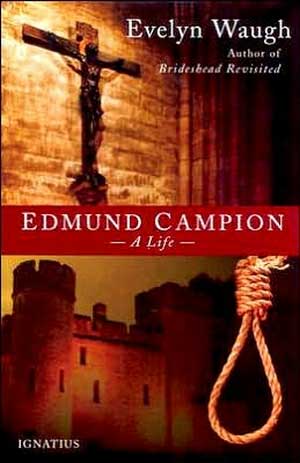 You can find the book here
You can find the book here
From the description:
Evelyn Waugh presented his biography of St. Edmund Campion, the Elizabethan poet, scholar and gentleman who became the haunted, trapped and murdered priest as “a simple, perfectly true story of heroism and holiness.â€
But it is written with a novelist’s eye for the telling incident and with all the elegance and feeling of a master of English prose. From the years of
success as an Oxford scholar, to entry into the newly founded Society of Jesus and a professorship in Prague, Campion’s life was an inexorable progress towards the doomed mission to England. There followed pursuit, betrayal, a spirited defense of loyalty to the Queen, and a horrifying martyr’s death at Tyburn.
Tags: catholic, catholic podcast, catholic prayer, cathollc spirituality, edmund campion, english martyrs, english reformation, Evelyn Waugh, holiness, ignatius press, mission
This entry was posted on Monday, July 2nd, 2012 at 12:47 pm
You can follow any responses to this entry through the RSS 2.0 feed.
“For Greater Glory: The True Story of  Cristiada The Cristero War and Mexico’s Struggle for Religious 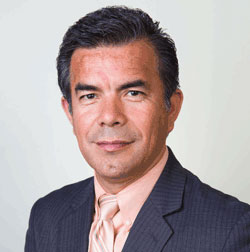 Freedom” is meant as a companion book to the film of the same name, but it truly be considered a stand alone in its own right.  Ruben Quezada does a fine job of outlining a horrific persecution which occurred just south of our border a little over 80 years ago, yet many of us know little or nothing about.  The Mexican government brutally killed men, women and children in an attempt to snuff out the life of the Roman Catholic Church in Mexico in the 1920’s.  Bishops and priests were martyred, Churches descrated, along many other atrocities. “Vivo Christo Rey” became the prayer triumphantly proclaimed by the Church Militant…this the story of their fight for religious freedom
Freedom” is meant as a companion book to the film of the same name, but it truly be considered a stand alone in its own right.  Ruben Quezada does a fine job of outlining a horrific persecution which occurred just south of our border a little over 80 years ago, yet many of us know little or nothing about.  The Mexican government brutally killed men, women and children in an attempt to snuff out the life of the Roman Catholic Church in Mexico in the 1920’s.  Bishops and priests were martyred, Churches descrated, along many other atrocities. “Vivo Christo Rey” became the prayer triumphantly proclaimed by the Church Militant…this the story of their fight for religious freedom
[powerpress]
 You can find the book here
You can find the book here
“For Greater Glory is a top-flight production whose message of the importance of religious freedom has particular resonance for us today.â€
— Most Reverend José Gomez, Archbishop of Los Angeles
“For Greater Glory is ‘must-see’ viewing for all those who care about faith and liberty today.â€
— Carl Anderson, Supreme Knight, Knights of Columbus
As you read you’ll discover:
• Who were the Cristeros?
• What drove the Mexican government to ruthlessly persecute Catholics?
• Can a priest “wage warâ€
• What role did groups like the Knights of Columbus play in this armed resistance?
• Why did thousands of Catholics – priests, religious, lay people – willingly give their lives in the Cristiada?
• What role did the U.S. play in ending this bitter conflict?
• What did the Pope do to support the Church in Mexico?
• Which characters in the movie went on to become Catholic saints and blesseds in real life?
• Why is this dramatic episode of history so little known today?
• What is the lesson of the Cristiada for those struggling for religious freedom today?
Tags: catholic, catholic podcast, catholic prayer, cathollc spirituality, cristero wars, freedom, igantius press, mexican martyrs, mexico, Ruben Quezada, Vivo Christo Rey
This entry was posted on Friday, June 29th, 2012 at 7:47 am
You can follow any responses to this entry through the RSS 2.0 feed.
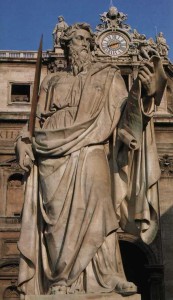
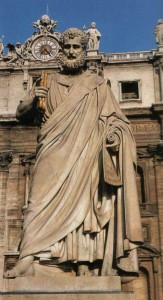 This is a FANTASTIC summation of the lives of Peter and Paul in the life of the early Church by Vatican Radio…don’t miss it!
This is a FANTASTIC summation of the lives of Peter and Paul in the life of the early Church by Vatican Radio…don’t miss it!
Why Peter and Paul ?
Wherever you go in Rome you always see Saint Peter and Saint Paul linked together.
Their feast day too is celebrated on the same day . Shouldn’t they each have their own feast day?
The irony is that they fought mightily in their lifetime and not just about trivial things but about matters that went to the very heart of what Christianity is all about.
Listen to Scripture scholar Mark Benedict Coleridge , Archbishop of Canberra and
Goulburn:[powerpress = “Vatican-Radio”]
Tags: acts of the apostles, apostles, catholic, catholic podcast, catholic prayer, cathollc spirituality, early church, martyr, martyrdom, Peter and Paul, Saint Peter, st peter, st. paul, sts. peter and paul, vatican radio
This entry was posted on Friday, June 29th, 2012 at 5:57 am
You can follow any responses to this entry through the RSS 2.0 feed.
Leave it to the wonderfully thoughtful Mike Aquilina to bring us the lives of just some of those glorious maternal nurturers we call “the 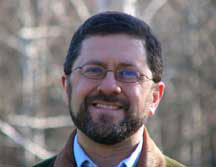 Mothers of the Church”.  From the well known Sts. Perpetua and Felicity and St. Monica to lesser known “mothers” like Proba the Poet and St. Olympias, Mike, along with his co-author Christopher Bailey, share their inspiring stories.  Mike Aquilina’s sincere love for these women and the witness they have provided us in our present age helps us to appreciate, once again, what God can do with ordinary people who are open to His extraordinary grace.
Mothers of the Church”.  From the well known Sts. Perpetua and Felicity and St. Monica to lesser known “mothers” like Proba the Poet and St. Olympias, Mike, along with his co-author Christopher Bailey, share their inspiring stories.  Mike Aquilina’s sincere love for these women and the witness they have provided us in our present age helps us to appreciate, once again, what God can do with ordinary people who are open to His extraordinary grace.
[powerpress]
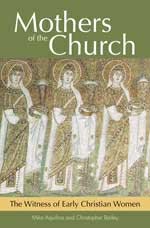 You can find Mike’s book here
You can find Mike’s book here
The Mothers of the Church include:
Holy Women of the New Testament
–St. Blandina
–St. Perpetua and St. Felicity
–St. Helena
–St. Thecla
–St. Agnes of Rome
–St. Macrina
–Proba the Widow
–St. Marcella
–St. Paula
–St. Eustochium
–St. Monica
–Egeria the Tourist
Tags: catholic, catholic podcast, catholic prayer, cathollc spirituality, Church, fathers of the church, mike aquilina, mothers of the church, osv, perpetua, st. paul center for biblical theology, witness
This entry was posted on Friday, June 8th, 2012 at 11:40 am
You can follow any responses to this entry through the RSS 2.0 feed.
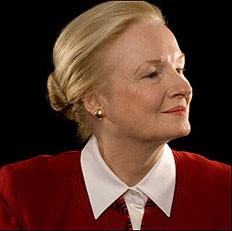
It was with great joy to be able to speak with Mary Ann Glendon about  “The Forum and the Tower: How Scholars and Politicians Have Imagined the World, from Plato to Eleanor Roosevelt”.  A fascinating book that chronicles not only the thoughts, but also the lives of  12 notable philosophers and/or statesmen throughout history.  The “and/or” is important, because not all can can successfully combine both.  In fact, only  two in this particular work, are found to be that complete “Philosopher Statesman”.  Why is that so?  Why is difficult for one who develops a theory to put it into practice?  And on personal level on my part, that this is one of the most enjoyable and engaging converstations I’ve been blessed to have in this particular “forum”.  We also discuss Blessed John Paul II and Pope Benedict XVI and their influence in today’s world.
Mary Ann Glendon is Learned Hand Professor of Law at Harvard Law School, and is a former United States Ambassador to the Vatican. She holds A.B., J.D., and M.C.L. degrees from the University of Chicago. In 2004, Pope John Paul II named her as the first woman to serve as President of the Pontifical Academy of Social Sciences.
[powerpress]
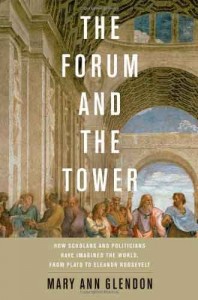 You can find the book here
You can find the book here
About the Book:
As Aristotle noted long ago, two very different and sometimes incompatible ways of life—the political and the philosophical—exert a powerful pull on the ambitious and talented members of any society. Mary Ann Glendon, who teaches at Harvard Law School, says that she sees this double attraction in her students. Some go into politics, but many turn away, fearful of the compromises and corruptions of power. Such students may go on to become teachers and scholars, but they never quite give up on the idea of “making a difference†in the wider, public world, even if they aren’t quite sure how to do it. Ms. Glendon’s The Forum and the Tower profiles 12 figures in Western history who struggled—not always successfully—with the conflict between an active life and a contemplative one, between ‘life in the public forum and life in the ivory tower.’… The Forum and the Tower is a wise exploration of the eternal tension between action and thought.
— Brian C. Anderson, The Wall Street Journal
Tags: catholic, catholic podcast, catholic prayer, catholic social teaching, cathollc spirituality, Harvard Law School, joy, Mary Ann Glendon, work
This entry was posted on Friday, May 18th, 2012 at 6:44 am
You can follow any responses to this entry through the RSS 2.0 feed.
[powerpress = “Vatican_Radio”]
It was the 18th of November 1965 and in Saint Peter’s Basilica the Second Vatican Council was drawing to a close when
during its penultimate session Pope Paul VI promulgated the Dogmatic Constitution on Divine Revelation.
At the time of this ground breaking Council, a young Patrick Kelly now Archbishop of Liverpool was present in Saint Peter’s Basilica witnessing on many an occasion the discussions of the Council Fathers. He shared with Veronica Scarisbrick his memories of that epoch and in a special way of that document on Revelation, gone down in history with the Latin title of ‘Dei Verbum’
Fifty years on from the beginning of that Council back on the 11th of October 1962 , among the events to mark this anniversary is a conference taking place here in Rome on April 26th sponsored by the Pontifical Lateran University and focusing on this same ‘Dei Verbum’ document.
The man to chair this meeting is the Dean of the Faculty of Church History and Fine Arts of the Church at the Pontifical Gregorian University, Jesuit Professor Norman Tanner.In an effort to find out more about ‘Dei Verbum’ Veronica Scarisbrick went round to call on him at the University there and began by asking him how important this document was at the time it was drawn up.
While acknowledging its central role Father Tanner also places it in the broader context of the Council documents and then goes on to highlight the relevance of this document today.
Tags: catholic, catholic podcast, catholic prayer, cathollc spirituality, Council Fathers, Second Vatican Council, vatican radio, Veronica Scarisbrick
This entry was posted on Thursday, April 26th, 2012 at 11:40 am
You can follow any responses to this entry through the RSS 2.0 feed.
The wonderfully intrepid Stephanie Mann joins us once again to discuss “Supremacy and Survival: Â How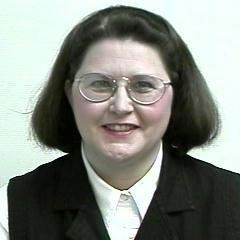 Catholic Endured the English Reformation”. Â The lessons of the past have much to teach us today, especially those experienced in England during the times of the Tudors and Stuarts. Â Religious liberty was the issue then, and is the issue today in many places throughout the world…even in the U.S. Â It’s not just about freedom of speech, it’s about the freedom of religion. Â What will they be writing about 500 years from now about the Catholics in America? Â Interesting…
Catholic Endured the English Reformation”. Â The lessons of the past have much to teach us today, especially those experienced in England during the times of the Tudors and Stuarts. Â Religious liberty was the issue then, and is the issue today in many places throughout the world…even in the U.S. Â It’s not just about freedom of speech, it’s about the freedom of religion. Â What will they be writing about 500 years from now about the Catholics in America? Â Interesting…
[powerpress]
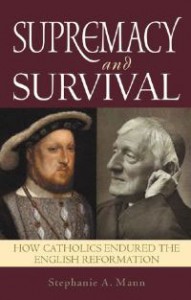 You can find the book here
You can find the book here
Click here to go to Stephanie’s fantastic blog “Supremacy and Survival“
Tags: catholic, catholic podcast, catholic prayer, cathollc spirituality, Stephanie Mann, Supremacy
This entry was posted on Monday, March 12th, 2012 at 9:07 am
You can follow any responses to this entry through the RSS 2.0 feed.
It’s been a fantastic journey to enter into the life Dietrich Bonhoeffer through the writing of Eric Metaxas. “Bonhoeffer: Pastor, Martyr, Prophet, Spy”  is a deeply moving telling of the life of the German Lutheran theologian and pastor who would face the leviathan of evil known as the Third Reich in Nazi Germany. In reading this work, I was reminded of the young man several years ago in Tiananmenin Square who stood before the tank during the protests. It doesn’t surprise me that Archbishop Chaput would highly recommended this book as well as the “witness” of this Christian man who was a voice for those who could not speak. He did what St. Paul called us all to do…to stand. Eric Metaxas does a great job bringing this biography to life and giving us the greater context
is a deeply moving telling of the life of the German Lutheran theologian and pastor who would face the leviathan of evil known as the Third Reich in Nazi Germany. In reading this work, I was reminded of the young man several years ago in Tiananmenin Square who stood before the tank during the protests. It doesn’t surprise me that Archbishop Chaput would highly recommended this book as well as the “witness” of this Christian man who was a voice for those who could not speak. He did what St. Paul called us all to do…to stand. Eric Metaxas does a great job bringing this biography to life and giving us the greater context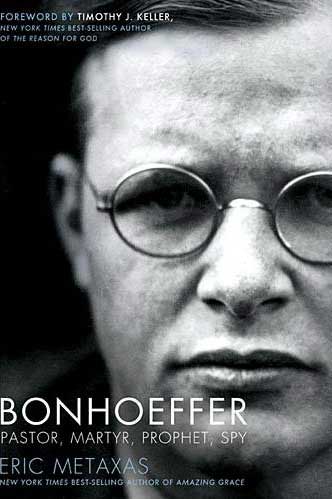 of his witness.
of his witness.
[powerpress]
Visit www.ericmetaxas.com to learn more
Here is another interview that Bruce and I had  wi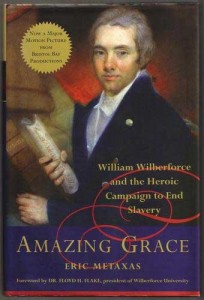 th Eric about William Wilberforce in his book “Amazing Grace” [powerpress url=”http://www.old.discerninghearts.com/Morning%20Show/Eric%20Metaxas%20Amazing%20Grace.mp3″]Download(right click  & choose “Save Link As”)
th Eric about William Wilberforce in his book “Amazing Grace” [powerpress url=”http://www.old.discerninghearts.com/Morning%20Show/Eric%20Metaxas%20Amazing%20Grace.mp3″]Download(right click  & choose “Save Link As”)
Tags: archbishop chaput, catholic, catholic podcast, catholic prayer, cathollc spirituality, dietrich bonhoeffer, eric metaxas, lutheran theologian, martyr, nazi germany, third reich, william wilberforce
This entry was posted on Friday, February 10th, 2012 at 12:51 am
You can follow any responses to this entry through the RSS 2.0 feed.
During this time when we are asked to remember the value of our religious liberty, our conversation  with Dr. Thomas Kidd is an important one.  Dr. Kidd gives us the life and  passionate thought of “Patrick Henry:  First Among Patriots”.  Patrick Henry gave us the great rallying cry “Give me Liberty or Give me Death”, and yet many of us may not realize that he had huge reservations about the scope of the Constitution, because he feared it could one day seize that liberty and destroy it  if allowed to go unchecked….very interesting.  I found this to be a fascinating book.  Would Patrick Henry’s concern turn out to be a prophetic one?  Dr. Thomas Kidd handles his subject well, and presents the time, place and overall personality of Henry with clarity and insight in a very compelling read.
with Dr. Thomas Kidd is an important one.  Dr. Kidd gives us the life and  passionate thought of “Patrick Henry:  First Among Patriots”.  Patrick Henry gave us the great rallying cry “Give me Liberty or Give me Death”, and yet many of us may not realize that he had huge reservations about the scope of the Constitution, because he feared it could one day seize that liberty and destroy it  if allowed to go unchecked….very interesting.  I found this to be a fascinating book.  Would Patrick Henry’s concern turn out to be a prophetic one?  Dr. Thomas Kidd handles his subject well, and presents the time, place and overall personality of Henry with clarity and insight in a very compelling read.
[powerpress]
Dr. Thomas Kidd teaches history at Baylor University and is Senior Fellow at Baylor’s Institute for Studies of Religion. His newest book is Patrick Henry: First Among Patriots, published in 2011 with Basic Books. God of Liberty: A Religious History of the American Revolution was published in 2010, also by Basic Books. Additional recent books include American Christians and Islam, published in 2008 by Princeton University Press, The Great Awakening: The Roots of Evangelical Christianity in Colonial America, published by Yale University Press in 2007, and The Great Awakening: A Brief History with Documents, with Bedford Books in 2007.  He is a contributor to patheos.com and has written op-eds for USA Today and the Washington Post.
You can find the book here
Wilfred M. McClay, SunTrust Chair of Excellence in Humanities, University of Tennessee at Chattanooga“His (Patrick Henry’a) historical reputation has suffered somewhat because of his opposition to the Constitution, but as Thomas Kidd shows in this vivid and lucid new biography, that judgment fails to do him justice. Indeed, his fears of the Constitution’s tendency toward consolidation and empire turned out to be well-founded, and the principal themes of his life, including his emphasis upon the cultivation of virtue and the protection of limited government, have never been more relevant. May this fine book lead to a long-overdue reconsideration of a great but neglected figure.â€
Tags: Basic Books, catholic, catholic podcast, catholic prayer, cathollc spirituality, liberty, Patrick Henry, religious liberty, Thomas Kidd
This entry was posted on Friday, January 27th, 2012 at 7:30 am
You can follow any responses to this entry through the RSS 2.0 feed.
And what would happen next………
.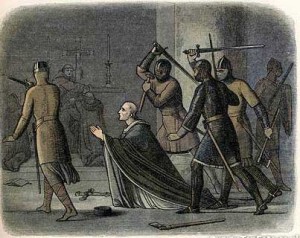
A strong man who wavered for a moment, but then learned one cannot come to terms with evil and so became a strong churchman, a martyr and a saint—that was Thomas Becket, archbishop of Canterbury, murdered in his cathedral on December 29, 1170.
His career had been a stormy one. While archdeacon of Canterbury, he was made chancellor of England at the age of 36 by his friend King Henry II. When Henry felt it advantageous to make his chancellor the archbishop of Canterbury, Thomas gave him fair warning: he might not accept all of Henry’s intrusions into Church affairs. Nevertheless, he was made archbishop (1162), resigned his chancellorship and reformed his whole way of life!
Troubles began. Henry insisted upon usurping Church rights. At one time, supposing some conciliatory action possible, Thomas came close to compromise. He momentarily approved the Constitutions of Clarendon, which would have denied the clergy the right of trial by a Church court and prevented them from making direct appeal to Rome. But Thomas rejected the Constitutions, fled to France for safety and remained in exile for seven years. When he returned to England, he suspected it would mean certain death. Because Thomas refused to remit censures he had placed upon bishops favored by the king, Henry cried out in a rage, “Will no one rid me of this troublesome priest!†Four knights, taking his words as his wish, slew Thomas in the Canterbury cathedral.
Thomas Becket remains a hero-saint down to our own times. From Saint of the Day
For a greater telling of this saint’s life – EWTN Library
Note: T. S. Eliot wrote a play — “Murder in the Cathedral” — about his life, and a movie — “Becket” (1964) — starring Peter O’Toole and Richard Burton has been made, too
Prayer for St. Thomas a Becket
Taken from the Roman Missal.
O God, for the sake of whose Church the glorious Bishop Thomas fell by the sword of ungodly men: grant, we beseech Thee, that all who implore his aid, may obtain the good fruit of his petition. Through our Lord Jesus Christ, Who livest and reignest with Thee in the unity of the Holy Spirit, forever and ever. Amen.
Tags: archbishop of Canterbury, Archishop of Canterbury, Canterbury cathedral, catholic, catholic podcast, catholic prayer, cathollc spirituality, Church, england, Henry II, martyr, matyrdom, middle ages, St. Thomas Becket, Thomas Becket
This entry was posted on Thursday, December 29th, 2011 at 5:19 am
You can follow any responses to this entry through the RSS 2.0 feed.
Trial and execution
Committed to the Tower of London, he was questioned in the presence of Queen Elizabeth, who asked him if he acknowledged her to be the true Queen of England. He replied she was, and she offered him wealth and dignities, but on condition of rejecting his Catholic faith, which he refused to accept. He was kept a long time in prison and reputedly racked twice. Despite the effect of a false rumour of retraction and a forged confession, his adversaries summoned him to four public conferences (September 1, 18, 23 and 27, 1581). Although still suffering from his ill treatment, and allowed neither time nor books for preparation, he reportedly conducted himself so easily and readily that he won the admiration of most of the audience. Tortured again on October 31, he was indicted at Westminster on a charge of having conspired, along with others, in Rome and Reims to raise a sedition in the realm and dethrone the Queen.
Edmund Campion, in a 1631 print.Campion was sentenced to death as a traitor. He answered: “In condemning us, you condemn all your own ancestors, all our ancient bishops and kings, all that was once the glory of England — the island of saints, and the most devoted child of the See of Peter.” He received the death sentence with the Te Deum laudamus. After spending his last days in prayer he was led with two companions, Ralph Sherwin and Alexander Briant, to Tyburn where the three sainted martyrs were hanged, drawn and quartered on December 1, 1581. He was 41 years of age.
Veneration and Feast Day
Edmund Campion was beatified by Pope Leo XIII on December 9, 1886. Blessed Edmund Campion was canonized nearly eighty-four years later in 1970 by Pope Paul VI as one of the Forty Martyrs of England and Wales with a common feast day of May 4. His feast day is celebrated on December 1, the day of his martyrdom.
The actual ropes used in his execution are now kept in glass display tubes at Stonyhurst College in Lancashire; each year they are placed on the altar of St Peter’s Church for Mass to celebrate Campion’s feast day—which is always a holiday for the school. – wiki
A Daily Prayer of St. Edmund
“I have made a free oblation of myself
to your Divine Majesty,
both of life and of death,
and I hope that
you will give me
grace and force to perform.
This is all I desire. Amen.”
-St. Edmund Campion
Tags: Blessed Edmund Campion, catholic, catholic podcast, catholic prayer, cathollc spirituality, death, edmund campion, england, feast day, Feast Day Edmund Campion, martyr, martyrdom, martyrs of england, queen elizabeth, Queen of England, saints
This entry was posted on Thursday, December 1st, 2011 at 12:02 am
You can follow any responses to this entry through the RSS 2.0 feed.
 Episode 12– The History of the Future
Episode 12– The History of the Future
The Resilient Church with Mike Aquilina, offers a fascinating look at the trials and triumphs of the Catholic Church over the past two thousand years. Fast-paced sketches of critical periods in church history give readers perspective on the challenges faced by the church today. Mike Aquilina does not shrink from the realities of the past, including badly behaved leaders and those who betrayed the Lord. Yet he also leaves us all with well-founded hope for the future: God remains faithful in every circumstance and fulfills his promise to remain with his church always. Hosted by Kris McGregor
Also visit Mike’s “Discerning Hearts†page for more audio downloads and information!
Tags: catholic, catholic podcast, catholic prayer, cathollc spirituality, church history, mike aquilina, Resilient Church, st. paul center for biblical theology
This entry was posted on Monday, November 28th, 2011 at 6:23 am
You can follow any responses to this entry through the RSS 2.0 feed.
 Episode 11– A Century of Cataclysms
Episode 11– A Century of Cataclysms
The Resilient Church with Mike Aquilina, offers a fascinating look at the trials and triumphs of the Catholic Church over the past two thousand years. Fast-paced sketches of critical periods in church history give readers perspective on the challenges faced by the church today. Mike Aquilina does not shrink from the realities of the past, including badly behaved leaders and those who betrayed the Lord. Yet he also leaves us all with well-founded hope for the future: God remains faithful in every circumstance and fulfills his promise to remain with his church always. Hosted by Kris McGregor
Also visit Mike’s “Discerning Hearts†page for more audio downloads and information!
Tags: catholic, catholic podcast, catholic prayer, cathollc spirituality, mike aquilina, Resilient Church
This entry was posted on Sunday, November 20th, 2011 at 10:56 pm
You can follow any responses to this entry through the RSS 2.0 feed.

